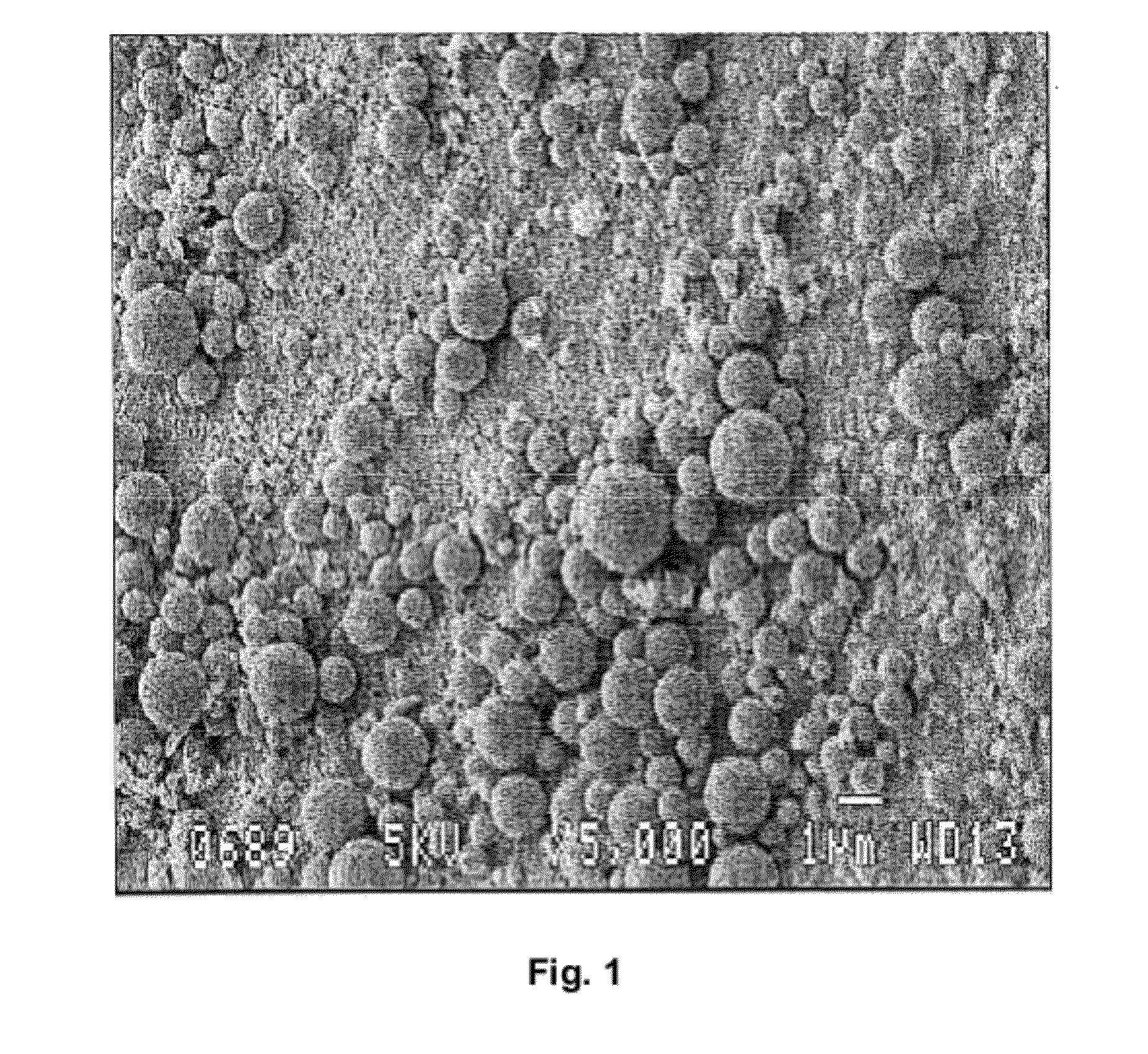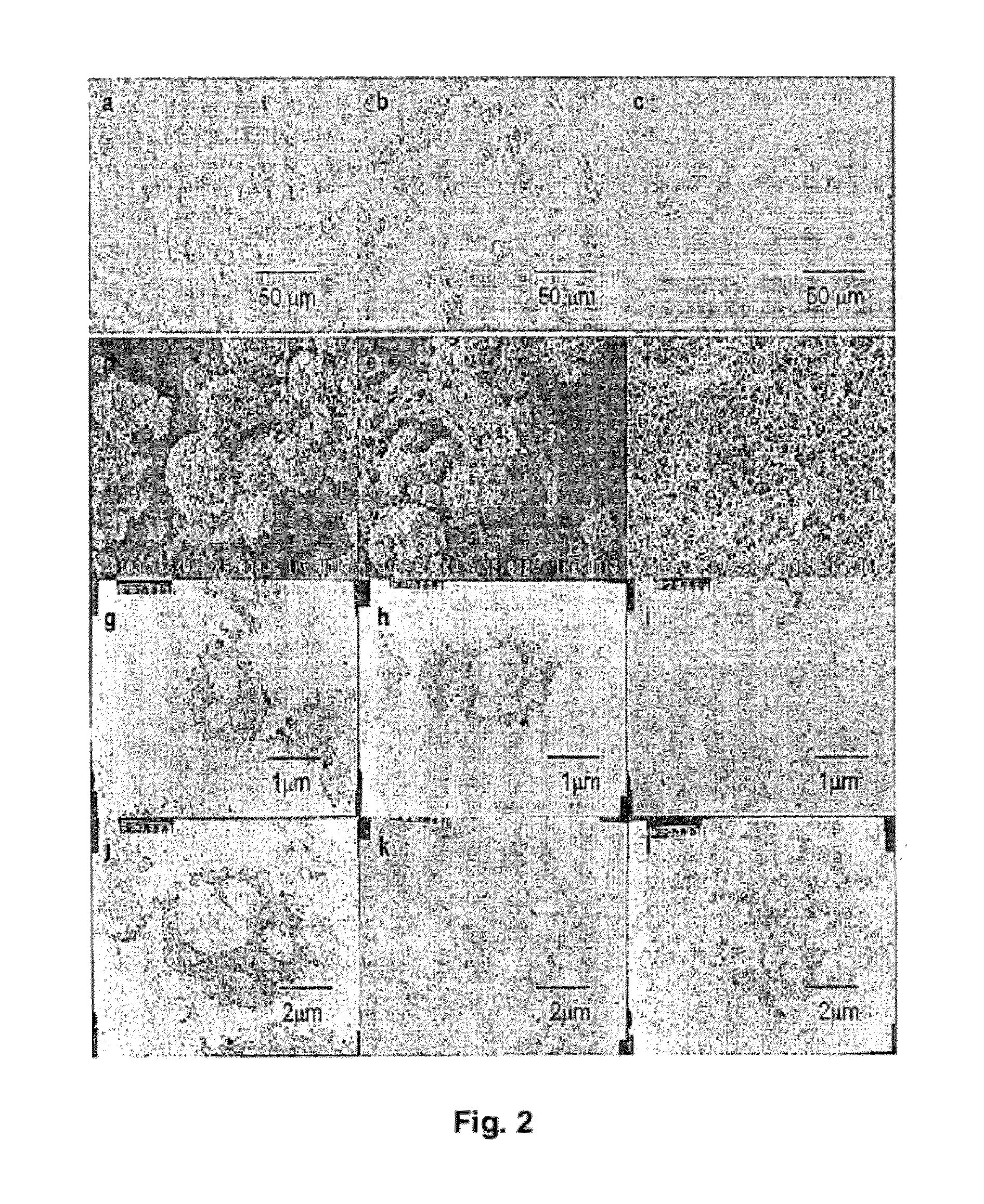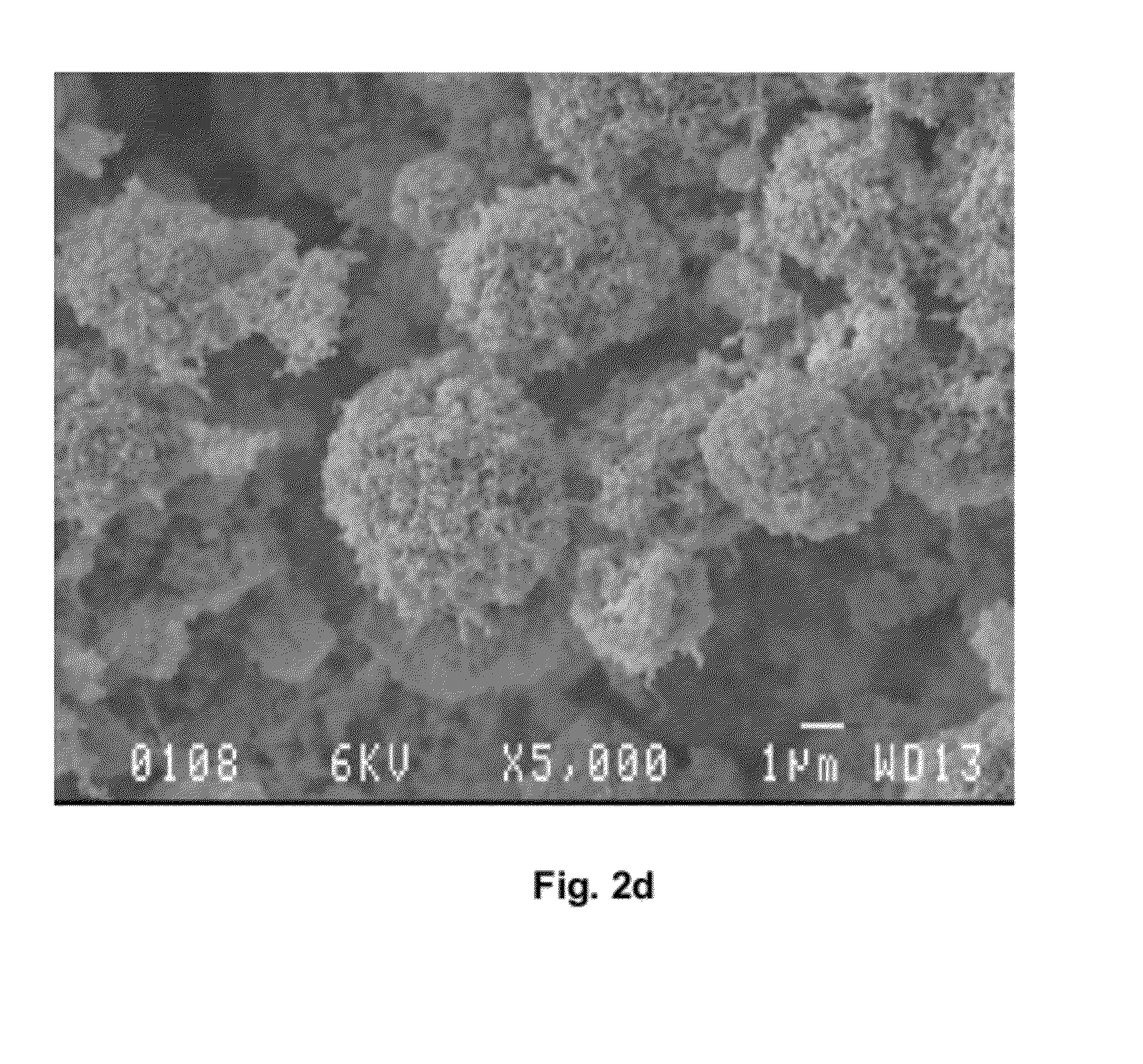Process for producing protein microparticles
a technology of protein microparticles and microparticles, which is applied in the field of protein microparticles production processes, can solve the problems of safety issues, incompatible and difficult to remove from food, food and pharmaceutical industries to use protein film or microparticle systems, and use of non acidic organic solvents, etc., and achieve the effect of enhancing or altering the functional properties of microparticles or products
- Summary
- Abstract
- Description
- Claims
- Application Information
AI Technical Summary
Benefits of technology
Problems solved by technology
Method used
Image
Examples
example 1
Formation of Kafirin Microparticles
[0089]A composition according to one embodiment of the invention was made by admixing the following (all percentages are given on a weight basis): a plasticizer (10%), glacial acetic acid (66%) and kafirin (24%), and the kafirin was dissolved in the acid. Distilled water was then added with stirring, and microparticles were formed. The concentration of protein was 2%, plasticizer 40% in relation to the protein content and an acid concentration of 5.4%.
[0090]The microparticles were prepared by weighing kafirin (1.8 g-88.63% protein) into a 125 ml Erlenmeyer flask. Plasticizer (0.66 g 1:1:1 lactic acid, polyethylene glycol (400), glycerol-40% in relation to protein) was mixed with glacial acetic acid (4.34 g) before adding to the kafirin with gentle stirring. The temperature was slowly raised to 30° C. to ensure full solvation. The protein solution was then left overnight (16 h) at room temperature to relax the protein. After this period distilled wa...
example 2
Formation of Zein Microparticles Using Either Acetic Acid, Lactic Acid or Propionic Acid
[0091]A composition was made by admixing the following (all percentages are given on a weight basis): a plasticizer (9.5%), glacial acetic acid (62%) (or lactic acid or propionic acid) and commercial zein (ZPP Gold, Zein Protein Products, Marina, Calif.) (29.6%), and the zein was dissolved in the acid. Distilled water was then added with stirring, and microparticles were formed. The concentration of protein was 10%, plasticizer 40% in relation to the protein content and an acid concentration of 21.6%. To reduce the protein content further to 2%, 21.6% acetic acid was added.
[0092]The microparticles were prepared by weighing zein (4 g-100% protein) into a 125 ml Erlenmeyer flask. Plasticizer (1.32 g 1:1:1 lactic acid, polyethylene glycol (400), glycerol-40% in relation to protein) was mixed with glacial acetic acid (8.64 g) before adding to the zein with gentle stirring. The temperature was slowly ...
example 3
Formation of a Coating Made with Kafirin Microparticles and Crosslinked by Heating in Order to Protect the Coated Material e.g. Methionine, a Limiting Amino Acid, from the Conditions in the Rumen of Multi-Gastric Animals
[0093]Microparticles of the invention were used to make a dried powder. This powder prepared as described above in the section, ‘powder formation’ was mixed with a dry substance, in this case, the amino acid, methionine at a ratio of 1:1. The powder mixture was then mixed with glacial acetic acid (1:2) to form a paste with the aim of fusing together the microparticles around the substance, e.g. methionine and forming a continuous coating. The paste was then either dried directly on a flat surface or first underwent a simple extrusion procedure without exposure to heat or excessive pressure. The coated material was then heat treated in a force draught oven at 60-70° C. overnight. The microparticle coated methionine preparations were then subjected to dissolution and s...
PUM
| Property | Measurement | Unit |
|---|---|---|
| temperature | aaaaa | aaaaa |
| thick | aaaaa | aaaaa |
| transparent | aaaaa | aaaaa |
Abstract
Description
Claims
Application Information
 Login to view more
Login to view more - R&D Engineer
- R&D Manager
- IP Professional
- Industry Leading Data Capabilities
- Powerful AI technology
- Patent DNA Extraction
Browse by: Latest US Patents, China's latest patents, Technical Efficacy Thesaurus, Application Domain, Technology Topic.
© 2024 PatSnap. All rights reserved.Legal|Privacy policy|Modern Slavery Act Transparency Statement|Sitemap



